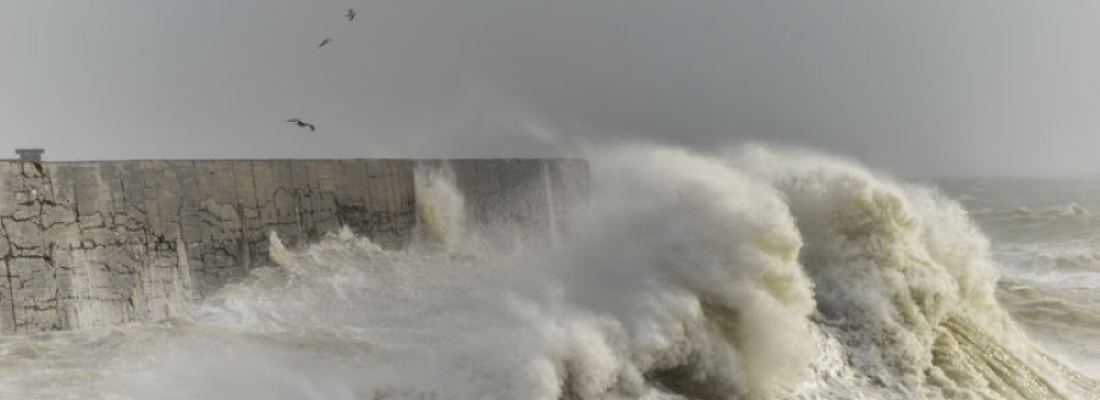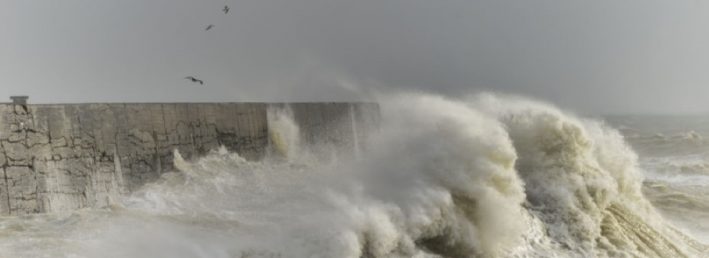When people think about the environment and climate change, they often think that there will not be noticeable or visible changes in their lifetime. Because of this, people are prone to thinking that there will be solutions to environmental problems like flooding before it becomes a huge issue. However, over the next 50 years, it is expected that there will be significant changes to coastal areas due to sea levels rising.
Rising sea levels
Since the end of the last ice age, there has been a rising of sea levels. When the water temperatures are warmer, sea levels rise at a quicker rate since ice sheets melt faster. No matter what happens from now on, we can’t change the increases we have already had in temperatures and, therefore, sea levels are going to rise no matter what. However, how much can we expect them to rise in the next 50, 100 or 150 years? Will the rise be drastic? Probably. It’s highly likely that sea levels will rise at least 30 cm by 2050 and will rise even quicker after that.
What and where are the problems?
It’s difficult to know how big the change will be and by when. This means that it makes it more difficult to decide what to do. The rising of the sea levels isn’t going to happen at a linear rate – it will be exponential. After devastating hurricanes in New Orleans, people began questioning whether there should have been proper flood walls built to prevent the storm surge from devastating the area. There are many more vulnerable cities too. The problems are not just limited to rising sea levels either. Rising numbers of more severe hurricanes can bring about higher and more devastating storm surges, as happened in New Orleans with Hurricane Katrina.
Existing storm defences and those most at risk
The Thames Estuary and London already have substantial protection from storm surges as do larges areas of The Netherlands since a lot of the area is already below sea levels. However, there are many places that have land that is close to or at sea level with no protection at all – places like Bangladesh. Any delta with a population is going to struggle if sea levels rise. Areas at greatest risk include the Mekong Delta, Shanghai’s Pudong district, Egypt’s north coast, Key West and Venice. New York City is also at risk; not necessarily from rising sea levels any time soon but storm surges caused by hurricanes. If there was a storm surge of 20 feet, LaGuardia and Kennedy airports would be underwater as would lower Manhattan, vehicle and subway tunnels. Other cities like Boston, Miami, Baltimore, Miami Beach and Charleston are at huge risks too from storm surges and we aren’t even talking about sea-level changes here either.
How can architects and planners plan for these problems?
There are many ways in which planners can alter landscapes on coastlines. Most design strategies, however, typically explore vertical options – things like houses on stilts, levees, mechanical barriers and walled flood defences. Yet, it is possible to think about horizontal options. We can make our coastlines absorb floodwater and absorb wave energy. Wetlands and sandy island barriers are great options but they can move a lot every year. Just like traditional flood and storm surge defences, landscape strategies need to be used carefully so that their benefits are long-lasting.
Growing seagrass in shallow water beds with crabs and fish is one solution. However, there can be problems because of storm-water runoff with sediments and pollution blocking sunlight. There are solutions to this – it is possible to build artificial reefs and islands with the right depth and conditions for seagrasses. These reefs and islands float submerged and not fixed into position on a sea bed. This means that they can be moved inland when the sea rises and they become a flexible marine edge. It is also possible to build these structures to be able to create flood storage or absorb wave energy.
Why go horizontal? Is it always the best way?
A horizontal approach is the best way of supporting ecosystems on the coastline. It’s impossible to remove coastal cities and so adding a coastal ecosystem can help to restore some of the pre-development habitats. Secondly, given the value of a lot of buildings on the coast, there isn’t enough to justify paying billions of pounds for a traditional, vertical barrier. Thirdly, if we don’t have the expensive barriers that open mechanically, then we will have worse problems with our aquatic ecosystems.
Where there is low-density, traditional strategies like raising floor levels could be a viable option but as soon as it comes to protecting the lower-density urbanised areas and ocean ecosystems, we really need to consider horizontal options.
Concluding thoughts – where to go next?
Time isn’t on our side. It took the Netherlands and Great Britain over 50 years to get flood protection systems into their valuable at-risk areas. For sea levels rising across the globe, it will take a lot of public participation and education. Before anything else, there needs to be extensive studies so that we can determine the size of the problem and the range of different solutions, not forgetting the cost and ways to manage costs. This will need to be led by many governments but design professions must start thinking about how they can help with the direction of travel.


